

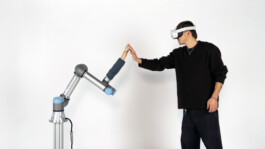
2025
course in Interactive Media
Nicole Albert. Tomas Alvarez Suldini, Xuanjun Chen, Yi Chen, Clara Eckhardt, Zoe Finkenzeller, Kiara Freidenberg, Simon Fried, Leon Gunsilius, Anja Kloss, Daniel Kroul, Ling Liu, Inna Melnik, Saskia Schleicher, Gabriel Seibold, Kevin Welz, Shuying Zhong, Yazel Özhan
Prof. Andreas Muxel
Elias Naphausen
Mathias Hradecsni
Betty Schmid (Department of Photography)
Instead of controlling we start to “co-operate” with robots. In our coexistence, we ascribe almost human qualities, emotions, and liveliness to our technical counterparts, but the rational machine is something else. But how might human-robot interaction be designed when machines evolve from passive tools to proactive, even social entities? In this course, students explored various interaction scenarios using a collaborative robotic arm.
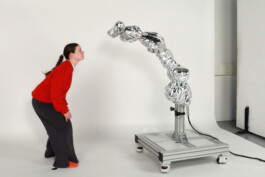
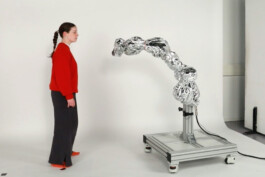
A(Synchronized) by Clara Eckhardt and Simon Fried is an interactive installation that explores the interplay between humans and robots by focusing on the concept of movement. The scenario leads through various phases of the relationship between humans and robots, focusing on central questions of humanization, functionality and autonomy of the robot.
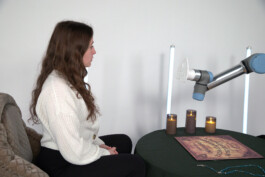

RoboSéance by Saskia Schleicher and Gabriel Seibold enables you to come face-to-face with spirits of the underworld. Incarnated in the robotic arm — watch closely, as the answers will be laid right in front of you.
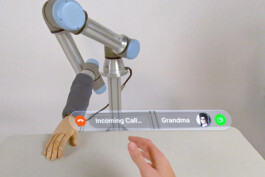
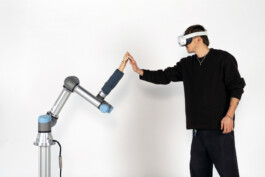
In an increasingly interconnected world, many people live far away from their loved ones. InTouch by Kevin Welz and Leon Gunsilius is an interface that enables physical touch over great distances, making remote conversations more emotional and immersive.

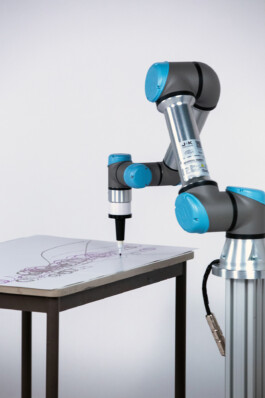
Orbitrax by Inna Melnik, Anja Kloss, Ling Liu and Shuying Zhong uses a webcam and robotic arm to track and map people’s positions in real time, transforming spatial data into interactive art.

The Living Canvas by Zoe Finkenzeller, Daniel Kroul and Xuanjun Chen attempts to reframe robots and AI as creative collaborators. By mirroring the painters emotions in the movement of the canvas, it forces their creative process to be more expressive.
Basketbot by Yazel Özhan focuses on user fun, moving in different ways to ensure a variety of movement to score points.
RoboTini by Yi Chen, Kiara Freidenberg, Nicole Albert and Tomás Alvarez was built to dance, to spin and to perform playful tricks with a glas in hand, becoming the life of any party.

All projects are based on a custom-built software developed within the research group Human-machine interaction with intelligent systems as part of the KI-Produktionsnetzwerk Augsburg . The interface offers intuitive and rapid prototyping using tools like TouchDesigner. An open-source release is planned soon, aiming to support creative disciplines such as design and architecture.